UPSC GS 1
Khiamniungan Tribe
- News: The Nagaland Tourism Department has issued a formal apology to the Khiamniungan Union Kohima following the omission of the Khiamniungan Tribe’s name in the Heritage Guide Map displayed during the Hornbill Festival 2024.
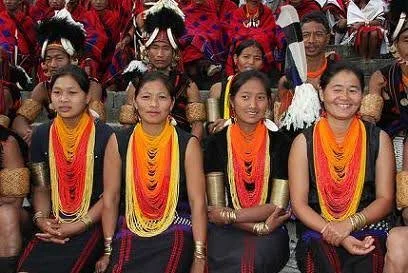
- Definition:
- The Khiamniungan tribe is one of the prominent tribes among the Nagas, residing in both India and Myanmar.
- Geographically, the Khiamniungan land lies in the eastern part of Nagaland in India and the north-western region of Myanmar.
- The term ‘Khiamniungan’ is a compound word derived from three components:
- ‘Khiam’ means water,
- ‘Niu’ means great,
- ‘Ngan’ means source.
- Collectively, the term translates to ‘source of great water or river’.
- According to the 2011 Census, the Khiamniungan tribe’s population in India stands at 61,983.
- Major Festivals:
- Tsokum Festival: This is one of the most significant festivals of the Khiamniungan tribe, celebrated with immense joy and grandeur.
- Khaotzao Sey Hok-ah Festival: This festival holds considerable importance as it marks the completion of all agricultural activities for the year.
Read more: Impeachment of Judges in India – Process & Provisions | UPSC
Golan Heights
- News: Turkey has denounced Israel’s plan to double the population living in the occupied Golan Heights at the south-western edge of Syria as an attempt to “expand its borders”.
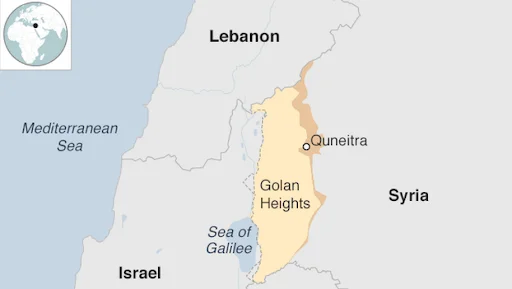
- Definition:
- The Golan Heights is a hilly region that overlooks the upper Jordan River valley to the west.
- It is a Syrian territory occupied by Israel since 1967. The region derives its name from the biblical city of refuge Golan in Bashan.
- Geography:
- The Golan Heights is bordered by the Jordan River and the Sea of Galilee to the west, Mount Hermon to the north, the seasonal Wadi Al-Ruqqād River to the east, and the Yarmūk River to the south.
- It stretches approximately 71 km from north to south and 43 km across at its widest point.
- The region covers an area of about 1,150 sq. km and is roughly boat-shaped.
- Historical Background:
- Before 1967, the Golan Heights was part of southwestern Syria. It fell under Israeli military occupation during the final stages of the 1967 Six-Day War.
- The majority of Syrian Arab inhabitants fled the region during the conflict.
- In 1973, Syria attempted to reclaim the Golan Heights during the Middle East War, but the effort was unsuccessful.
- Both countries signed an armistice in 1974, and since then, a UN observer force has monitored the ceasefire line.
- In December 1981, Israel unilaterally annexed the portion of the Golan Heights it occupied.
- Under international law and UN Security Council resolutions, the Golan Heights is considered occupied territory.
- Settlements and Population:
- The region contains more than 30 Israeli settlements housing approximately 20,000 residents.
- These settlements are regarded as illegal under international law, a claim which Israel disputes.
- Alongside the settlers, around 20,000 Syrians, primarily Druze Arabs, continue to reside in the region, having remained when it came under Israeli control.
- Strategic Importance:
- The Syrian capital, Damascus, is visible from the elevated Golan Hills.
- The region overlooks northern Israel’s Galilee and the Sea of Galilee while controlling key routes leading to Damascus from the Syrian side.
- The Golan Heights shares borders with Jordan and Lebanon, adding to its geopolitical significance.
- The area is a vital water source for the arid surroundings, as rainwater from the Golan Heights feeds into the Jordan River, a critical resource for the region.
Santa Ana Winds
- News: Santa Ana-driven wildfires are a natural part of California’s landscape. However, experts say the wildfire season in California has lengthened in recent years.
- Definition: Santa Ana winds are dry, warm, and powerful winds commonly experienced in Southern California. These winds are named after Santa Ana Canyon, located in the region.
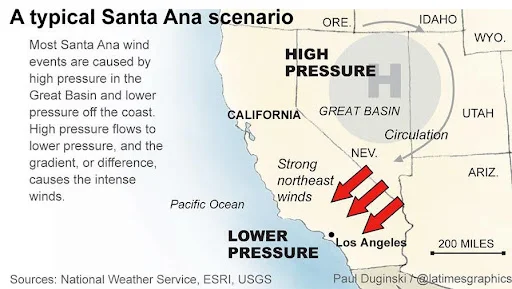
- Characteristics of Santa Ana Winds:
- Nature: The winds are dry and warm (sometimes hot) as they blow through the Southern California area.
- Direction: They flow inwards from the desert regions, including the Great Basin of the western United States.
- Humidity: The winds have extremely low humidity, often dropping below 20% or even 10%, which dries out vegetation and makes it prone to burning.
- Origin of Santa Ana Winds:
- Pressure Difference:
- The winds are triggered when high-pressure systems develop over the Great Basin (located between the Rocky Mountains and the Sierra Nevada).
- This high-pressure system interacts with low-pressure zones over California’s coastal areas.
- Wind Movement:
- The pressure difference drives the strong winds from the inland deserts of the Great Basin (to the east and north of Southern California), over the mountain ranges, and towards the Pacific Ocean.
- Compression and Heating:
- As the winds descend down the mountains, they undergo compression and heat up.
- This process further reduces the wind’s moisture content, leading to extremely low humidity.
- Seasonal Occurrence:
- Santa Ana winds are most common during winter weather patterns, particularly from October to January.
- During this time, high-pressure systems near the Great Basin interact strongly with low-pressure air over the Pacific Ocean.
- Impact on Wildfires:
-
- The dry, warm nature of Santa Ana winds combined with extremely low humidity turns vegetation into flammable fuel.
- These conditions significantly increase the risk of wildfires in areas like Malibu, California.
- Climate change further amplifies these effects, as rising temperatures and drought-like conditions exacerbate wildfire intensity and frequency.
Potti Sriramulu
- News: CM Chandrababu Naidu has promised to establish Telugu varsity, name it after Potti Sriramulu.
- Definition:
- Potti Sriramulu was a prominent Indian freedom fighter renowned for his instrumental role in the creation of Andhra State.
- For his unparalleled sacrifice for the people of Andhra, he earned the revered title of ‘Amarajeevi’.
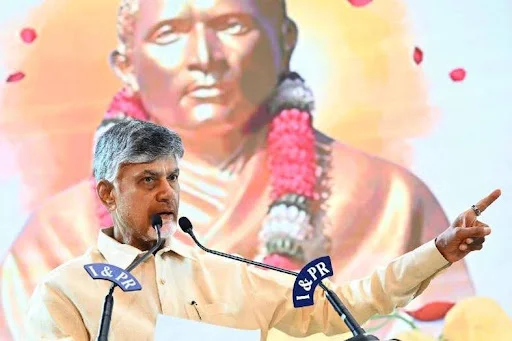
- Early Life and Background:
- He was born on March 16, 1901, in the Madras Presidency, now part of Nellore, Andhra Pradesh.
- Throughout his life, he worked tirelessly for social justice and the upliftment of Dalits.
- Contribution to the Freedom Struggle:
- He was deeply inspired by Mahatma Gandhi to join India’s struggle for independence.
- He actively participated in major movements, including:
- Non-Cooperation Movement (1920–1922)
- Salt Satyagraha (1930)
- Individual Satyagraha (1941–1942)
- During the Quit India Movement in 1942, he was arrested by the British and imprisoned alongside Mahatma Gandhi.
- Post-Independence Contribution:
- He became a key figure in the movement demanding a separate state for Andhra.
- On October 19, 1952, he began a hunger strike in support of Andhra Pradesh’s formation from the Madras Presidency.
- After an arduous 58-day fast, he passed away on December 15, 1952, in Mylapore.
- His sacrifice became the catalyst for change, leading to:
- The announcement of Andhra Pradesh on December 19, 1952.
- Formal statehood being granted on November 1, 1956.
- Socio-Religious Contributions:
-
- He was actively engaged in village reconstruction programmes at Rajkot, Gujarat.
- He joined the Gandhi Ashram, established by Yerneni Subrahmanyam, in Krishna district, Andhra Pradesh.
- He undertook three significant fasts to support Dalit (Harijan) entry into temples, including:
- Venu Gopala Swamy Temple in Moolapeta.
- Holy places in and around Nellore.
UPSC GS 2
National Energy Conservation Awards 2024
- News: On the occasion of National Energy Conservation Day 2024, the Vice President of India gave away the National Energy Conservation Awards 2024.
- Definition:
- The National Energy Conservation Award (NECA) is an initiative of the Bureau of Energy Efficiency (BEE) under the Ministry of Power.
- It was instituted in 1991 to promote energy conservation and efficiency alongside the declaration of National Energy Conservation Day, celebrated annually on December 14.

- Objective: The awards recognize and honour industrial units, institutions, and establishments that have achieved significant reductions in energy consumption while maintaining or improving operational efficiency.
- Selection Procedure:
- Award Committee: The committee is chaired by the Secretary (Power) and is responsible for reviewing and approving the sectors eligible for the awards.
- Application Evaluation: Applications are evaluated by a Technical Committee chaired by the Member (Thermal), Central Electricity Authority (CEA). The committee comprises representatives from the following organizations:
- Ministry of Railways
- Central Electricity Authority (CEA)
- Energy Efficiency Services Limited (EESL)
- National Productivity Council (NPC)
- Central Pulp and Paper Research Institute (CPPRI)
- Bureau of Energy Efficiency (BEE)
- Final Approval: After evaluation, the Technical Committee’s recommendations are submitted to the Award Committee for final consideration and approval.
- Award Ceremony: Selected winners across various sectors are honoured and felicitated on National Energy Conservation Day.
- Key Facts about the Bureau of Energy Efficiency (BEE):
- Establishment: The BEE was established on March 1, 2002, under the provisions of the Energy Conservation Act, 2001.
- Mission: To assist in formulating policies and strategies with a focus on self-regulation and market principles for energy conservation.
- Key Objectives: The primary goal of the BEE is to reduce the energy intensity of India’s economy.
- Functions and Coordination:
- BEE works in coordination with designated consumers, designated agencies, and other relevant organizations.
- It identifies, recognizes, and utilizes the existing resources and infrastructure to perform its functions under the Energy Conservation Act.
- Regulatory and Promotional Role: The Act empowers the BEE to undertake both regulatory and promotional functions to ensure effective energy conservation measures across the country.
UPSC GS 3
Search and Rescue Aid Tool (SARAT)
- News: The Indian National Centre for Ocean Information Services (INCOIS) has developed a newer version of its own Search and Rescue Aid Tool (SARAT) for ‘better accuracy and utility’.
- Definition:
- SARAT was initially launched in 2016 to assist in search and rescue operations at sea, enabling the swift location of individuals or vessels in distress.
- It was developed as part of the Make in India program by INCOIS.

- Working Mechanism:
- The tool employs model ensembling to address uncertainties in the initial position and last known time of the missing object, thereby increasing the probability of locating it.
- The movement of missing objects is primarily influenced by ocean currents and winds.
- SARAT utilizes high-resolution model currents derived from the Regional Ocean Modelling System operated on High-Performance Computers at INCOIS.
- Key Features:
- Object Selection: Users can choose from 60 types of missing objects based on their shape and buoyancy.
- Interactive Inputs: Users can pinpoint the last seen location on an interactive map. Alternatively, they can specify a coastal location, distance travelled, and bearing angle to estimate the last known position of the object.
- Search Results: Results are displayed on an interactive map, showing the probable search area. The information is also sent as text messages via email or mobile phones.
- Language Support: Requests and responses are available in the languages of coastal states to enable local fishermen to swiftly assist distressed individuals.
- Upgrades in SARAT Version 2:
-
- The search area now expands from the last known position of the missing object, ensuring greater accuracy.
- Improved Visualizations: Enhanced graphics provide better clarity for identifying probable search areas.
- Color Coding: Search regions are now color-coded to simplify judgment and prioritization.
- Position Markers: A distinct marker highlights the last known location of the object for easier identification.
Humpback Whale
- News: A male humpback whale swam 13,046 km from South America to Africa, setting a record for the longest migration and crossing two breeding populations.
- Definition: The humpback whale derives its name from the distinct hump-shaped appearance on its back. Its long pectoral fins are the inspiration for its scientific name, Megaptera, which translates to “big-winged”.
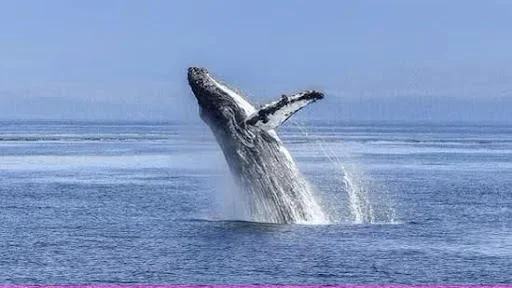
- Appearance:
- Female humpback whales are larger than males.
- Their body is predominantly black or grey with white undersides on the flukes, flippers, and belly.
- Humpbacks feature large knobs on their head, jaws, and body, with each knob associated with one or two hairs.
- Distribution:
- Humpback whales are found in all oceans across the globe.
- They are known for their extensive annual migrations, among the longest of any mammal on Earth.
- These whales travel between polar regions during summer for feeding and tropical or subtropical waters in winter for breeding.
- Feeding Behavior:
- Humpbacks employ a unique feeding technique called bubble netting.
- In this method, they exhale bubbles while swimming in a spiral pattern beneath a dense patch of prey, effectively trapping the food in the water column.
- Conservation Status:
-
- IUCN Status: Least Concern.
- CITES Listing: Appendix I.
See more: Critical Minerals in India: A Comprehensive Overview | UPSC
Idiopathic Pulmonary Fibrosis (IPF)
- News: Zakir Hussain, tabla maestro and five-time Grammy Award winner, recently passed away in San Francisco due to idiopathic pulmonary fibrosis (IPF).
- Definition: Idiopathic Pulmonary Fibrosis (IPF) is a chronic and progressive lung disease characterized by scarring (fibrosis) of the lung tissue, resulting in irreversible loss of lung function. The exact cause remains unknown, which is why it is referred to as idiopathic.
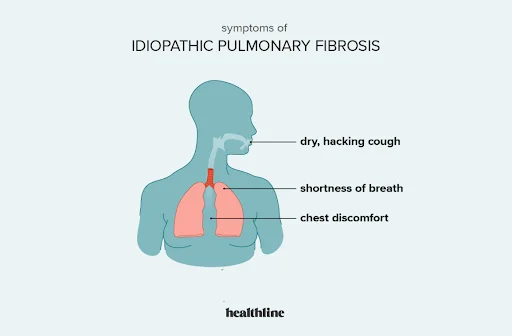
- How IPF Affects the Lungs: Healthy Lung Function: In a healthy lung, oxygen easily passes through the walls of the air sacs (alveoli) into the capillaries and eventually the bloodstream.
- Impact of Fibrosis:
- In IPF, scarring (fibrosis) causes the lung tissue to thicken and stiffen, reducing the lungs’ ability to expand and take in oxygen.
- This fibrosis primarily affects the interstitium (the tissue surrounding the alveoli).
- The walls of the alveoli thicken, making it increasingly difficult for oxygen to transfer into the bloodstream.
- Result: Over time, IPF leads to persistent breathlessness, fatigue, and a significant decline in quality of life.
- Symptoms of IPF:
- Shortness of breath (particularly during physical activity)
- Prolonged dry cough
- Pain in the joints and muscles
- Fatigue and weakness
- Unexplained weight loss
- Treatment for Idiopathic Pulmonary Fibrosis: While there is currently no cure for IPF, treatments aim to slow the progression of lung damage and improve symptoms:
- Medications: Certain medicines can help slow the progression of the disease.
- Oxygen Therapy: Supplemental oxygen may be provided to improve oxygen levels in the bloodstream.
- Ventilator Support: In advanced stages, ventilators can assist with breathing.
- Lung Transplant: A lung transplant may be considered for eligible patients. However, this option carries risks, such as organ rejection or infections.

